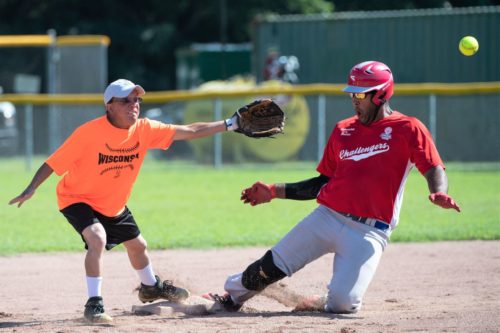Acknowledging individual experiences: Special Olympics Canada’s updated Long-Term Athlete Development framework
 In the past 15 years, sports organizations have shifted to meet the continuous evolution of knowledge around long-term development and quality sport.
In the past 15 years, sports organizations have shifted to meet the continuous evolution of knowledge around long-term development and quality sport.
Special Olympics Canada (SOC) is one organization that has put its learnings into action, with a new edition of its Long-Term Athlete Development (LTAD) framework released after several years of adjustments and planning: Long-Term Athlete Development: Supporting Quality Sport Experiences 2.0.
The first edition has acted as a resource for provincial and national Special Olympics representatives since 2007. But the document itself has not, to date, been an evolutionary resource. Language, ideas and frameworks have stayed the same within the document since its original release—until today.
This new edition ensures that Special Olympics athletes are considered for their individual physical literacy journeys, and acknowledges that many athletes enter the long-term athlete development pathway at different ages and stages.
“Based on what we now know and have experienced, the framework that we had at the time didn’t suitably reflect our athletes’ journey,” said Tom Davies, Director of Athlete and Coach Development for the Special Olympics.
“So what we have today has changed quite drastically and focuses a lot more on the sporting context that athletes are participating in, rather than the rigid stage framework we had back in 2007.”
Some key changes in Long-Term Athlete Development: Supporting Quality Sport Experiences 2.0 include:
Focusing on physical literacy throughout the life course
In the original version of Special Olympics Canada’s LTAD model, the focus on physical literacy was most prominent for athletes at a young age. In reviewing that content, Special Olympics Canada acknowledged a need to shift perspectives.
“Especially with some of our athletes that come to us at an older age and have their first involvement in our programs later in life, we see a lot of athletes without the physical literacy and basic, fundamental movement skills. So we appreciate that the physical literacy component needs to be integrated in our model from start to finish.”
Incorporating motivation, confidence and competence across an athlete’s journey
With that knowledge, Special Olympics Canada saw the importance of incorporating motivation, competence and confidence into their model to define where athletes are landing in their pathway, given their individual capacity. This means eliminating references to chronological age throughout their model and instead focusing on the athlete’s personal experience, as that age qualifier didn’t align with their athlete’s development given disability delays.
Acknowledging the fluidity of the development pathway
Special Olympics Canada also acknowledged the need to have less of a rigid development pathway and bring together their concepts of discovery, active for life and sport excellence in a more fluid diagram.
“A lot of our athletes participate in two to three sports a year, and our national team is a true representation of our athlete population. We have athletes of all abilities competing on the world stage,” Davies said.
Naming the development pathway
Notably, one document element has stayed the same regardless of Sport for Life’s changed language around Long-Term Athlete Development. Today, Sport for Life has removed ‘athlete’ from the term; but for Special Olympics Canada, athlete recognition is an essential piece of their guiding principles.
“Our athletes are phenomenal and work hard for that title. So it was crucial for us that ‘athlete’ was in the model name and at the core of the framework, to drive home that we are a sport organization providing opportunities for people with intellectual disabilities that are excellent athletes,” Davies said.
With these revisions now in place, the updated document has just been released by Special Olympics Canada. To support its implementation, Davies and his team have built out an online, end-user-driven tool so that users can dive deeper into content that is relevant to them. Essentially, it provides an interactive version of the document that is easily accessible online rather than referencing a printed copy.
The online tool also provides a home for any supporting documentation Special Olympics Canada creates in the future, such as a quality sport checklist or one-pagers on specific topics—an opportunity for the document to be evolutionary and meet their ongoing needs.
“Special Olympics Canada has always been cutting edge with important insights into the realities and needs of their athletes. Over the years, SOC has moved many initiatives forward successfully and this is another example of their commitment to high quality programs for their athletes,” Sport for Life’s Director of Quality Sport Carolyn Trono said.
For more information on Special Olympics Canada’s new LTAD document, please visit their website.

